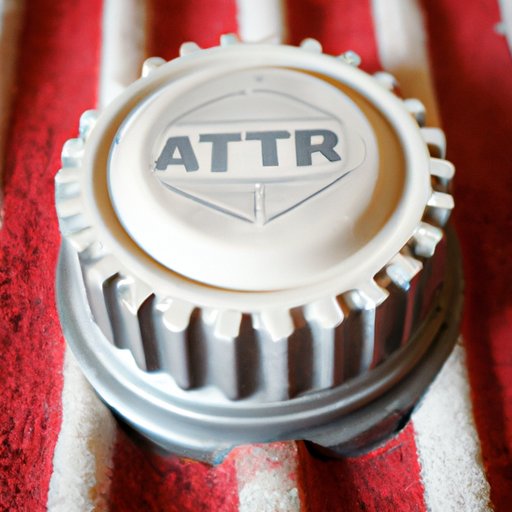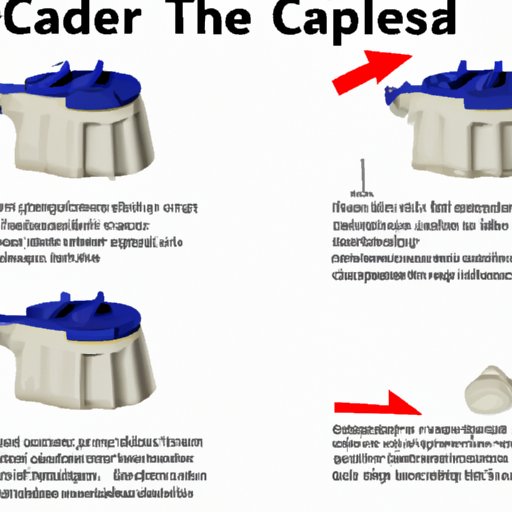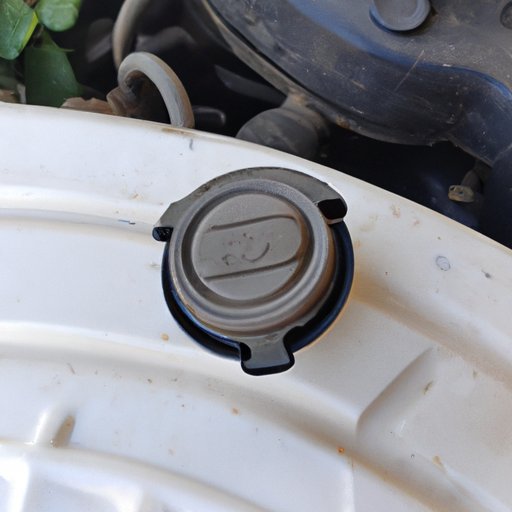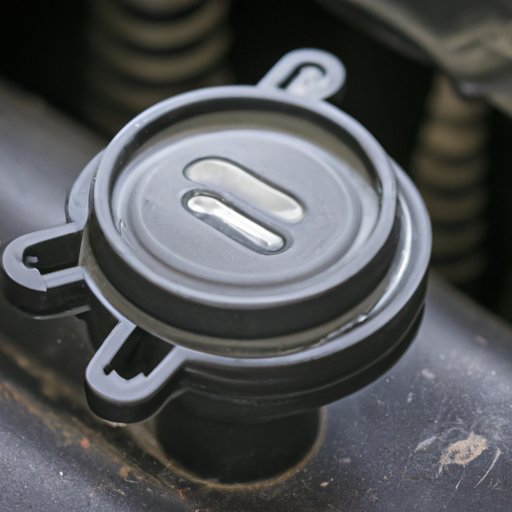Introduction
A radiator cap is an essential component of any car’s cooling system. It regulates the pressure and temperature of the coolant, ensuring that your engine runs at optimal temperatures. But what exactly is a radiator cap and how does it work? In this article, we’ll explore the basics of radiator caps, the science behind them, and how they keep your engine cool. We’ll also provide a comprehensive guide to understanding radiator caps, so you can better maintain your vehicle.
Exploring the Basics of Radiator Caps: How Do They Work?
A radiator cap is a small, round device that fits on top of the radiator. It consists of a spring-loaded valve and a pressure-sensitive diaphragm. The valve is designed to open when the pressure inside the radiator exceeds a certain level. This allows the hot coolant to escape, which helps to regulate the temperature of the engine and prevent it from overheating. The diaphragm is designed to close the valve once the pressure has been released, preventing the coolant from escaping.
The function of the radiator cap is to regulate the pressure and temperature of the coolant. As the engine heats up, the coolant expands and the pressure increases. The radiator cap is designed to release this pressure before it reaches dangerous levels. This prevents the coolant from boiling and keeps the engine running at optimal temperatures.
There are two main types of radiator caps: standard and high-pressure. Standard radiator caps are used on most vehicles and are designed to regulate temperatures up to 15 psi. High-pressure radiator caps are designed for higher pressures and are typically used on high-performance engines.

The Science Behind Radiator Caps: What You Need to Know
In order to understand how a radiator cap works, it’s important to first understand the science behind it. The pressure and temperature of the coolant are directly related. As the pressure increases, the temperature of the coolant also increases. This can cause the coolant to boil, which can lead to engine damage if left unchecked. The radiator cap is designed to prevent this from happening by releasing the pressure before it reaches dangerous levels.
The radiator cap is designed to regulate the pressure and temperature of the coolant by controlling the flow of the coolant. When the pressure inside the radiator reaches a certain level, the valve on the radiator cap opens and the coolant is released. This reduces the pressure and brings the temperature back down to a safe level. The diaphragm then closes the valve, preventing any further coolant from escaping.
How a Radiator Cap Keeps Your Engine Cool
A radiator cap is essential for keeping your engine cool. It prevents the coolant from boiling and protects your engine from damage. The radiator cap works by regulating the pressure and temperature of the coolant. When the pressure reaches a certain level, the valve on the radiator cap opens and releases the pressure. This brings the temperature back to a safe level and prevents the coolant from boiling.
Using a radiator cap also offers several other benefits. It helps to reduce engine noise by preventing the coolant from boiling. It also helps to improve fuel economy by allowing the engine to run at optimal temperatures. Finally, it helps to prolong the life of the engine by preventing the coolant from boiling.

A Comprehensive Guide to Understanding Radiator Caps
Now that you understand the basics of radiator caps and how they work, it’s time to learn how to check the condition of your radiator cap and replace it when needed. Here is a comprehensive guide to understanding radiator caps.
Checking the Condition of the Radiator Cap
It’s important to regularly check the condition of your radiator cap. If the rubber seal on the cap is cracked or worn, it needs to be replaced. You should also check the condition of the spring-loaded valve. If it is not working properly, the cap needs to be replaced.
Replacing the Radiator Cap When Needed
If your radiator cap is cracked, worn, or not working properly, it needs to be replaced. Make sure to buy a replacement cap that is designed for your vehicle. It should have the same pressure rating as your existing cap. Once you have the new cap, follow these steps for replacing it:
- Drain the coolant from the radiator.
- Unscrew the old radiator cap.
- Screw the new radiator cap onto the radiator.
- Fill the radiator with coolant.
- Start the engine and check for leaks.
Tips for Maintaining the Radiator Cap
To ensure that your radiator cap is in good working condition, there are a few things you can do. Make sure to check the condition of the cap regularly and replace it when needed. You should also make sure that the coolant level is at the correct level. This will help to keep the pressure and temperature of the coolant at optimal levels.

The Benefits of Using a Radiator Cap in Your Vehicle
Using a radiator cap provides numerous benefits for your vehicle. The most important benefit is safety. By regulating the pressure and temperature of the coolant, a radiator cap helps to prevent the engine from overheating and reduces the risk of engine damage. It also helps to improve engine performance by allowing the engine to run at optimal temperatures. Finally, it helps to extend the life of your engine by preventing the coolant from boiling.
Conclusion
A radiator cap is an essential component of any car’s cooling system. It regulates the pressure and temperature of the coolant, ensuring that your engine runs at optimal temperatures. Understanding how a radiator cap works and maintaining it properly can help to keep your engine running smoothly and extend its life. Follow the tips outlined in this article to get the most out of your radiator cap and keep your engine cool.
(Note: Is this article not meeting your expectations? Do you have knowledge or insights to share? Unlock new opportunities and expand your reach by joining our authors team. Click Registration to join us and share your expertise with our readers.)
